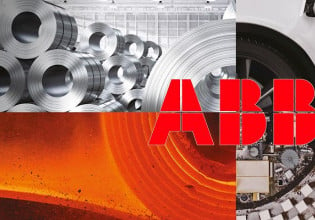Measuring the Force of Rotation: Torque Sensors
Understanding torque is a key method of preventing damage to machines and ensuring a long lifespan. We have all heard of torque, but what is it, and how is it measured in automated systems?
See Our Previous Articles on Industrial Sensors:
- Pressure Sensor Fundamentals and Types
- Level Sensors For Use in Level Measurement
- Flow Rate Sensors for Fluid System Measurement
- Microelectromechanical System (MEMS) Sensors
- Position and Distance Sensors for Accurate Tracking
Torque is an important physical quantity that measures the force that causes an object to rotate or twist. It is calculated by multiplying the force applied to an object by the distance from the application point to the center of the rotation axis. It is measured in Newton-meters (Nm) or foot-pounds (lb-ft).

Figure 1. Basic construction of a torque sensor. Image used courtesy of Omega Engineering
Torque sensors are a type of force sensor that can measure the rotational force, or torque, applied to an object. They can monitor, control, and optimize the performance of machinery, engines, and other mechanical systems. Torque sensors are used in a wide range of industrial and scientific applications.
This article explores the working principles of torque sensors, what a torque transducer is, the types of torque sensors, and their various applications.
Torque Sensor Working Principles
A torque sensor's basic working principle is to measure a material's deflection or strain when a torque is applied to it. Various methods are used to measure this deflection or strain, but most torque sensors use one of two main methods: strain gauges or magnetoelastic sensors.

Figure 2. A strain gauge bonded to the surface of a shaft. Image used courtesy of Binsfeld Engineering
Strain Gauge
Strain gauges are small devices bonded to a material’s surface and measure strain. For example, when a torque is applied to a material, it causes deformation that is detected by the gauge. This strain is then converted into an electrical signal that can be measured and analyzed. Strain gauges are often used in combination with other types of sensors to measure other physical phenomena, such as pressure, temperature, and vibration. Some common applications of strain gauges include load cells and pressure transducers.
Magnetoelastic Sensor
A magnetoelastic sensor uses a magnetic field to detect the strain of a material. Torque applied to the material causes changes in its magnetic field, which is then measured by the sensor. The change in the magnetic field is proportional to the applied torque. Magnetoelastic sensors are well-suited for use in harsh environments, including high temperatures, high vibration, and corrosive environments.

Figure 3. Cutaway diagram of a torque transducer with its internal components. Image used courtesy of Burster
Torque Transducers
Torque transducers convert torque into an electrical signal. They consist of a rotating shaft with either strain gauges or magnetoelastic sensors attached. When torque is applied, these sensors deform, and the amount of deformation is converted into an electrical signal using special electrical circuits.
One of the most common conditioning electrical circuits employed is the Wheatstone Bridge circuit. This resistor array method consists of an arrangement of two parallel voltage divider circuits whose relative output voltage changes according to the applied torque.
Torque transducers come in various sizes, shapes, and measurement ranges, depending on the application’s requirements.
Torque Sensor Types
There are two main types of torque sensors: static and dynamic.
Static Torque Sensors
Static torque sensors measure torque in a stationary or fixed position without any movement or rotation taking place. These sensors are commonly used in laboratory and research environments that require precise and accurate measurements. They are also used in industrial applications, more commonly for quality control.
Dynamic Torque Sensors
In contrast to the static variant, dynamic torque sensors measure torque in a moving or rotating system. They are more complex than static sensors because shaft rotation cannot be stopped; therefore, the measurements are considered real-time.
Also, dynamic sensors supply power to the shaft, while static sensors do not. Consequently, dynamic torque measurement permits calculating the shaft’s power. Knowing this quantity is essential for efficiently controlling a mechanism, improving cyclic loads, and reducing fatigue and failures.
Dynamic torque sensors are used in various industrial applications that require real-time torque measurements. One of the most important tasks they can do is monitor and control the performance of engines, turbines, and other mechanisms.
Applications of Torque Sensors
The following are some of the most common applications of torque sensors:
Manufacturing: The main purpose of torque sensors in manufacturing is to control the performance of machinery and mechanical systems, including whole assembly lines and robotic systems. They may also be used in a laboratory setting for testing and quality control.
Aerospace: Aircraft engines and turbines rely on torque sensors for monitoring performance. Torque sensors are also used to research and develop new aerospace technologies like propulsion and control surfaces.
Automotive: Torque sensors are crucial for measuring the torque output of engines and transmissions.
Vibration Sensors in Automation
In the next article in our series, we will look at vibration sensors and their use in monitoring manufacturing equipment.






